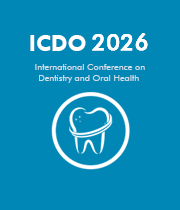Gingivitis
Gingivitis is a form of gum disease that causes inflammation and swelling of the gums. It is usually seen as the first sign of periodontal disease. If it is not treated, it can lead to more serious health complications. The primary cause of gingivitis is a buildup of plaque on the teeth. Plaque is the sticky, colorless film of bacteria which forms on the surface of teeth. When plaque is not removed with regular brushing and flossing, it can harden to tartar. Tartar is difficult to remove, and can cause the gums to become irritated and inflamed. Other factors that can contribute to gingivitis are hormonal changes, certain medications, smoking, poor diet, and underlying medical conditions. The main symptom of gingivitis is red and swollen gums that may bleed easily when brushed. Other common symptoms can include bad breath and a metallic taste in the mouth, receding gums, and tenderness or pain when chewing food. Gingivitis can usually be prevented with careful oral hygiene. This includes brushing twice a day, flossing daily, and regular dental visits for professional cleaning and check-ups. The best way to treat gingivitis is to remove the plaque that is causing it. This may require professional cleaning or scaling to remove hardened tartar deposits. Antibiotics may also be prescribed to clear up any infection caused by plaque bacteria. In some cases, oral rinses may be recommended to reduce plaque buildup. For those with underlying health conditions that may be contributing to gingivitis, it is important to follow instructions given by your doctor and visit your dentist regularly. With proper oral hygiene and regular dental check-ups, gingivitis can easily be avoided. However, if left untreated, the symptoms can worsen and cause more serious health complications. If you are concerned about your gum health or notice any signs of pain or bleeding, it is important to consult your dentist for a proper diagnosis and best treatment plan.

David Geoffrey Gillam
Queen Mary University of London, United Kingdom
Christopher Turner
Spacemark Dental, United Kingdom




Title : Evaluating hygienist follow up for head and neck oncology patients in secondary care: Results from a two cycle audit
Peter Basta, Newcastle Dental Hospital, United Kingdom
Title : Atypical facial pain unravelled
Christopher Turner, Spacemark Dental, United Kingdom
Title : New treatment of temporomandibular disorder through muscle balance and muscle regeneration by activation of quiescent muscle stem cells( satellite cells) with mitochondrial dynamics
Ki Ji Lee, National Reserach Foundation & Busan Medical University, Korea, Republic of
Title : MRONJ and ORN: Referral or management in primary care? Navigating guidelines in the context of long waiting lists
Alisha Sagar, NHS England, United Kingdom
Title : Managing the unexpected: An Insight into supernumerary teeth
Bahar Gharooni Dowrani, Guy's and St Thomas' NHS Foundation Trust, United Kingdom
Title : Laxative prescribing for post operative head and neck cancer patients at Derriford Hospital
Pui Sze Kylie Li, Cardiff and Vale University Health Board, United Kingdom